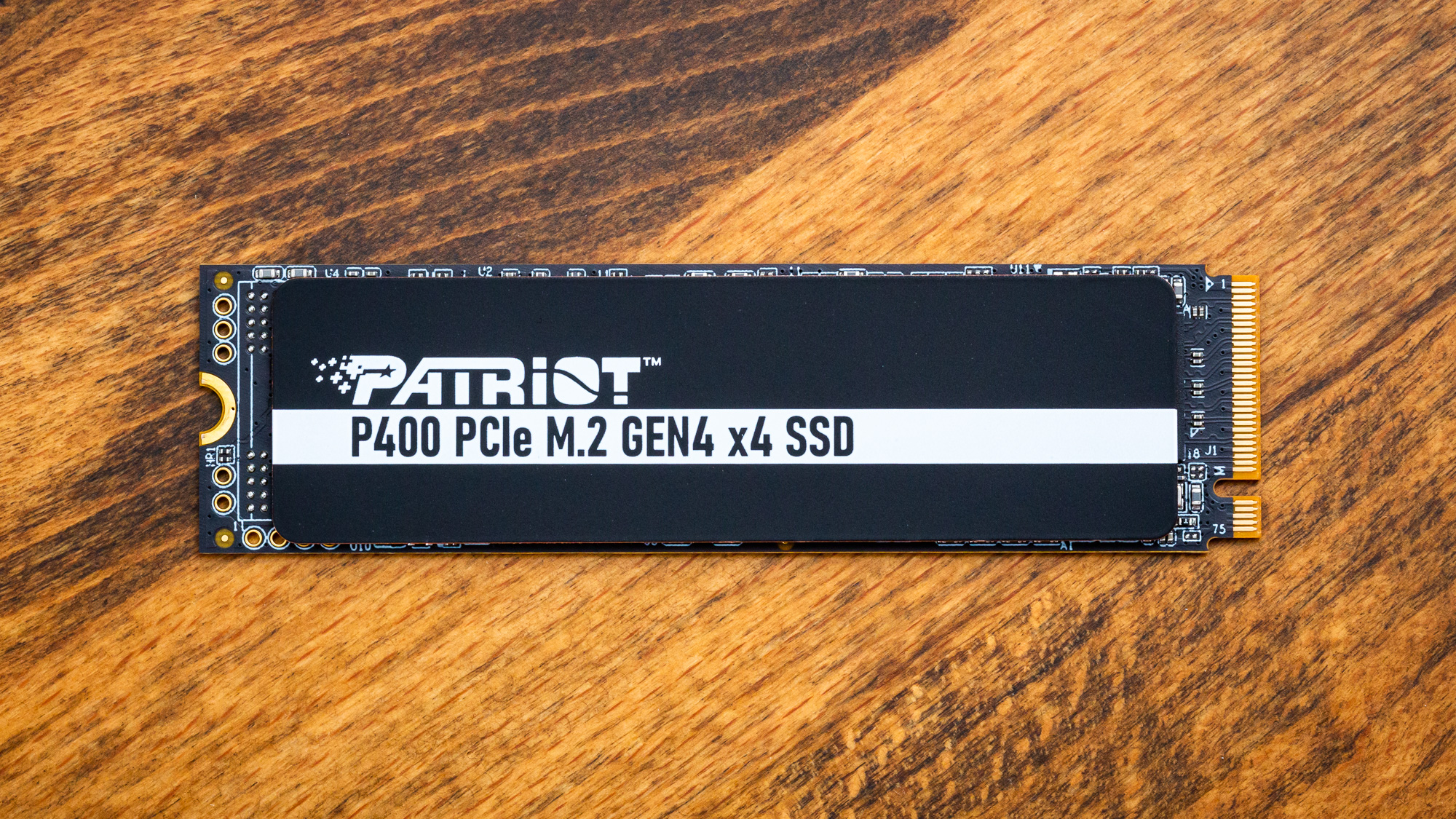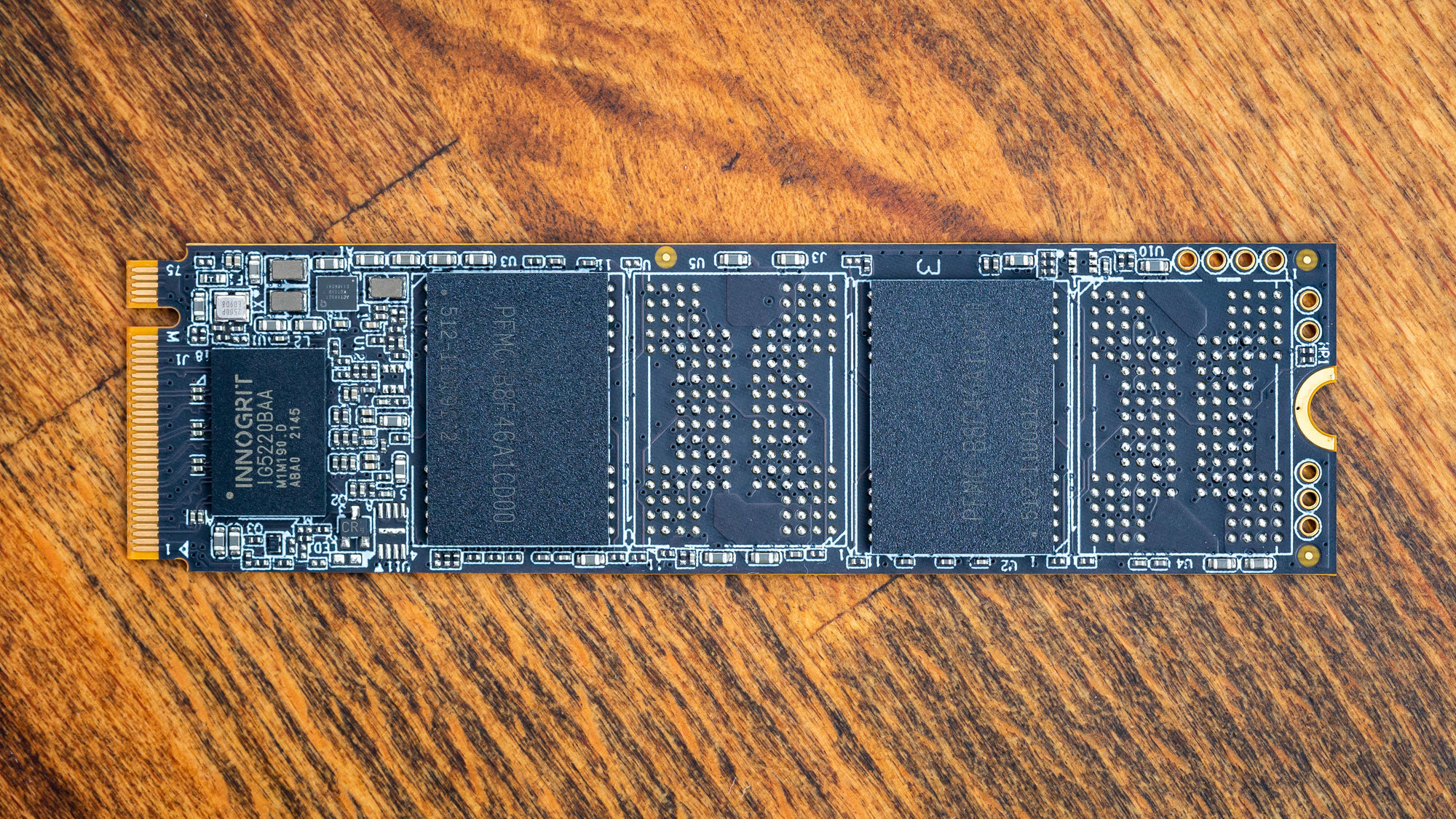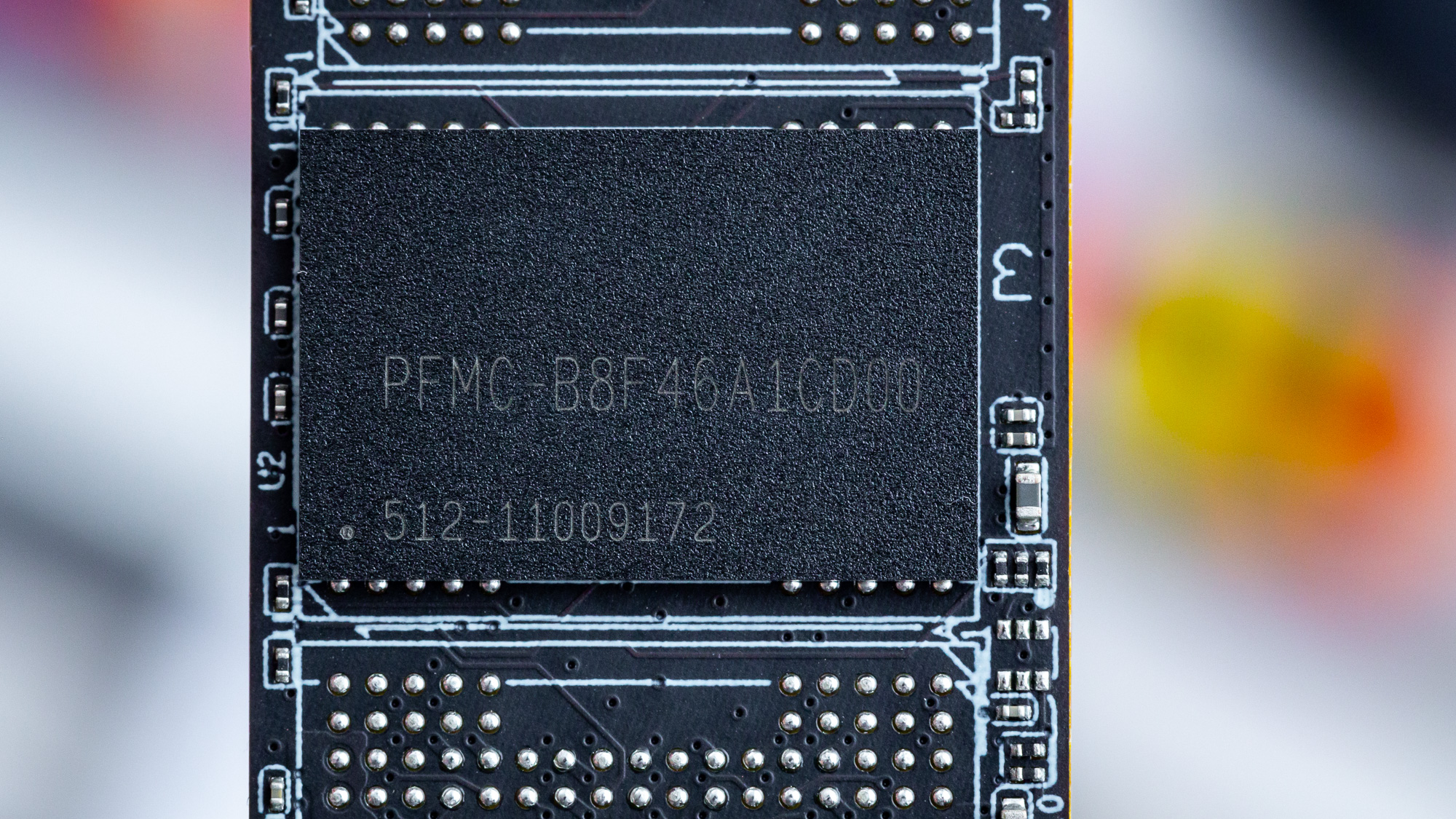Tom's Hardware Verdict
The Patriot P400 is a strong, mid-range PCIe 4.0 that’s suitable for both the PS5 and PCs. It shows that a reasonably-priced DRAM-less drive with a powerful SSD controller and good flash can be fast without compromise.
Pros
- +
Pricing is good
- +
Good sustained and all-around performance
- +
Very high endurance
Cons
- -
Some quirks with power consumption
- -
Has capable competition
Why you can trust Tom's Hardware
Patriot’s P400 is an entry-level PCIe 4.0 SSD that's designed to be affordable for the PlayStation 5 (PS5) or budget PC builds. The P400 is cheap enough to be a strong choice for new buyers who want an NVMe drive that gets the job done without any fanfare.
The P400 lacks DRAM and has a shorter warranty than its peers, which include the Adata Legend 840 and ATOM 50, as well as the HP FX900 we recently reviewed. It compensates with higher endurance, but the P400's cooling solution leaves something to be desired. Nevertheless, we expect that its performance is more than adequate for most users, and pricing is competitive.
The budget NVMe SSD space has many contenders, including the WD SN570 and Samsung 980 in the PCIe 3.0 category. Meanwhile, the WD SN770 remains a powerful contender in the PCIe 4.0 camp. However, if you absolutely need the bandwidth or want a cheap drive for the PlayStation 5, you will lean more toward the latter or a drive like the P400. These drives are priced about the same, with the exception of the SN570 being a bit cheaper, helping make it a good compromise against the Samsung 980.
With so much selection, it’s a good time to be an SSD fan. But that can be a bittersweet proposition: Too many options can create indecision. Should you get the FX900 or the P400? We will compare these two drives in our performance benchmarks to hopefully demonstrate that you can’t go wrong — it’s all a matter of where your priorities lie.
Specifications
| Product | 512GB | 1TB |
| Pricing | $64.99 | $99.99 |
| Capacity (User / Raw) | 512GB / 512GB | 1024GB / 1024GB |
| Form Factor | M.2 2280 | M.2 2280 |
| Interface / Protocol | PCIe 4.0 x4 | PCIe 4.0 x4 |
| Controller | InnoGrit IG5220 | InnoGrit IG5220 |
| DRAM | No (HMB) | No (HMB) |
| Flash Memory | 176-Layer Micron TLC (B47R) | 176-Layer Micron TLC (B47R) |
| Sequential Read | 5,000 MBps | 5,000 MBps |
| Sequential Write | 3,300 MBps | 4,800 MBps |
| Random Read | 550K | 620K |
| Random Write | 450K IOPS | 550K |
| Security | N/A N/A | N/A N/A |
| Endurance (TBW) | 400 TBW | 800 TBW |
| Part Number | P400P512GM28H | P400P1TBM28H |
| Warranty | 3-Year | 3-Year |
The Patriot P400 only comes in 512GB and 1TB capacities, which is similar to the HP FX900, Adata Legend 840, and Atom 50. This is fine, as these are budget drives meant to be quick and affordable. This is especially true at 1TB, where the P400 comes in at just $0.10 a GB. That's currently a bit cheaper than the FX900 and SN770. It’s certainly possible to get SSDs cheaper than this, particularly SATA SSDs and cheaper PCIe 3.0 options, including the 670p with QLC. That's why you'll have to take performance into consideration.
The P400 is PS5-compliant and is rated for up to 5/4.8 GBps of sequential read/write throughput and 620K/550K read/write IOPS. This also makes it a good choice for a PC that can handle PCIe 4.0 drives. The P400 is still fast on a 3.0 system, but it’s possible to get a cheaper drive like the SN570 in that case. If you’re looking at future-proofing, there are also faster 4.0 drives available. While this seems to make a drive like this a bit niche, in fact, the P400 is a bit of a jack-of-all-trades that we generally find more compelling than drives based on Phison’s E16 SSD controller.
In contrast to the five-year warranty you'll find with the HP FX900 and other rivals, the P400 only has a three-year warranty. This is a downside because the warranty period tends to be more important than the endurance rating for the average user. However, the P400 does offer 800 TB of write endurance per TB of capacity, which far exceeds the FX900 and also exceeds what you often find in high-end drives. As this is within a smaller period of time, the drive writes per day rating is rather high. However, the P400 would not be our first choice for a drive for heavier write workloads.
Get Tom's Hardware's best news and in-depth reviews, straight to your inbox.
A Closer Look



The P400 is topped with a graphene label that acts as a heat spreader, although this is less substantial than the FX900’s graphene padding. ADATA’s similar drives use a metal heat spreader instead, which at least appears to be a bit more functional. Under the P400’s label, we see the DRAM-less controller and two NAND packages. The rear of the drive contains a second label that shows basic information about the drive.
The InnoGrit IG5220 is a DRAM-less, entry-level PCIe 4.0 SSD controller designed for cheaper drives. Nevertheless, it's a cut above what is available at PCIe 3.0, with higher peak bandwidth and impressive IOPS. This controller has proven popular as it fills the gap that the Phison E16 once did, albeit without DRAM. In fact, this controller helped usher in a new era of fast DRAM-less controllers, even though WD’s earlier Blue drives were quite good.
This controller actually gained some competition when WD brought out its SN770 with a proprietary controller. While certainly better than the SN750 SE’s E19T, the IG5220 potentially has more competition on the horizon. This includes Phison’s E21T, which may be a pseudo-replacement for the E16 and should see both TLC and QLC, and SMI’s SM2269XT, which recently popped up on ADATA’s Legend 850. This is all good news for users as it heralds greater options and, hopefully, more competition.
The flash appears to be Micron’s 176-layer TLC, or B47R, a popular pairing with this controller. This flash is also on the Crucial P5 Plus, some InnoGrit IG5236-powered drives like the FX900 Pro, and the faster models using Phison’s E18 controller, like the updated Sabrent Rocket 4 Plus. This flash has been more or less unparalleled — that is until SK hynix brought out the Platinum P41 with its own 176-layer NAND. There are many technical differences between these two types of flash; however, for the general user, it just means better performance with less power draw.
MORE: Best SSDs
MORE: How We Test HDDs And SSDs
MORE: All SSD Content

Shane Downing is a Freelance Reviewer for Tom’s Hardware US, covering consumer storage hardware.

